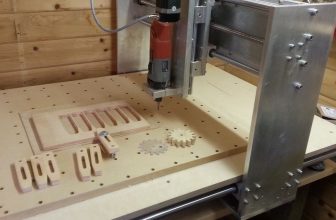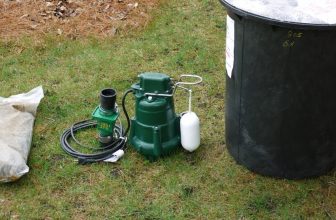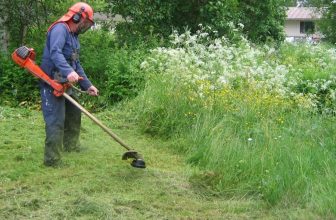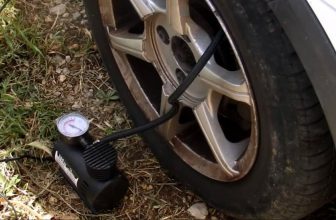Whether you are a professional or a woodworking enthusiast, you are sure to need a reliable wood glue to help you with your work. When it comes to wood glue, the variety of glues available is indeed diverse, yet not all glues can be expected to provide the adhesive strength you might be looking for. It is for this reason that you should take your time and learn about the many brands out there and what their products have to offer. To help you through, we put together a list of the ten best wood glue adhesives the market has to offer so that you will have a good idea of what to look for.
10. DAP 00157 Rapid-Fuse
The most recent advancement in carpentry, woodworking adhesives, the DAP Rapid Fuse wood glue integrates advanced cyanoacrylate technology to deliver the best in the industry. Curing in only 30 minutes, it is ready to sand, stain or plane, yet remains repositionable for 3 minutes, allowing perfect alignment. It creates a 40% stronger bond than poplar, pine, or cherry woods. It is ideal for all types of wood. It is easy to use, mess-free and easy to clean.
9. J-B Weld 8251
J-B Weld is the perfect glue anyone who wants to fix up furniture or trim or anything wooden needs. It is a 2-part epoxy system particularly formulated for excellent wood bonding or repairs. It is thus ideal for any wood repairs you want accomplished in and around the house. It sets in just 6 minutes, making it perfect for easy, quick projects. Curing to a light tan, it blends in chicly with most furniture décor. After it has cured, this glue forms a remarkably strong bond, and it allows shaping too—file, sand, drill or tape—to leave your desired look.
8. Titebond 5066F Original
Titebond’s 5066F Original Wood Glue, the industry standard for any woodworking, offers a highly strong initial tack along a quick speed offset for a reduced clamp time. Also creating a bond that is stronger than the very material wood, it allows easy and excellent sanding, yet not affected by finishes. It helps any woodworker to achieve expert results. Besides wood, it also works for hardboard, leather, particleboard, and other materials. It is also non-toxic, easy to use, and simple to clean with water.
7. Glue Masters THI0102 Instant Glue
The Glue Masters’ THI0102 is a professional-grade wood glue for those who need superior bonding strength on their woodcraft or DIY projects. It is also great for typical household furniture repairs as well as carpentry. It is a woodwork hobbyist’s best companion for creating delicate models of anything—trains, automobiles, or planes. Its formula dries fast and is thick, ensuring zero wastage or spills, and thus ease of use. This is your ideal glue for having the job done stress-free, without making a mess.
6. Rhino 21534 Pro
The Rhino 21534 is a commercial-grade, quality adhesive that bonds virtually everything instantly. It is ideal for indoor and outdoor use, for industrial or business wood projects. It is an innovative product resulting from years of expert research and testing, offering a tougher, stronger and longer-lasting quality adhesive. Furthermore, its formula is resistant to shock, heat, moisture, impacts, and vibrations.
5. Titebond 1414 III Ultimate
The Titebond 1414 III is the pioneer one-part, water clean-up type of wood glue to offer waterproof qualities. Besides the waterproofing quality, its formula provides superb bond strength, lower application temperature, and longer open assembly. The glue is toxic-free, solvent-free, and yet cleans up with just water. It is indeed safer than conventional waterproof types. At the same time, it offers a firm initial tack and sands easily with no softening.
4. Elmer’s E7010
This is a great wood glue for small wood home repairs and carpentry works. It comes in a bottle designed for ease of use. Its nozzle position allows you to directly apply to the surface in focus. The glue formula is toxic-free and usable on any wood type, creating a bond with great strength. If required, it is simple to clean and it does not emit any harmful fumes like many sub-par wood types of glue sometimes do.
3. Elmer’s E7330
The Elmer’s E7330 Carpenter’s Wood Glue is great and versatile for interior and exterior use both. This wood glue has a professional formula that blends real wood fibers, thus delivering superior staining after the project is finished. You then get greater results on painting, staining, as well as sanding than when using ordinary glues models. With the Elmer’s MAX, the wood is likely to break way before the bond.
2. Gorilla 6205021
Gorilla’s 6205021 Wood Glue is one adhesive that carpenters, woodworkers, and hobbyists trust for great woodworking results. That it is PVA glue, one that provides a water-based adhesive that is simple to use, yet with excellent holding power. In fact, it is superbly water resistant and also dries a natural hue to leave an invisible bond line on your woodworks. Then again, this is the least you should expect from any high-end wood glue.
1. Loctite 1365882 Professional
This professional-grade Loctite Super Glue provides superior performance over conventional glues, working faster and holding stronger on more, different surfaces compared to ordinary instant adhesives—because of its unique additive. Its super-strength formula works for heavy-duty projects as well as repairs, instantly bonding not only wood but also metal, ceramic, glass and more. Drying clear and setting without clamping, it is resistant to moisture, cold temperatures, and most chemicals.
A Guide To The World Of Wood Glues
It doesn’t matter if a person is a carpenter, a DIY enthusiast, a homeowner or someone who does crafts in their spare time, at some point they’re going to need a quality glue that’s capable of bonding wood together. And there’s no shortage of different types of these glues available. However, it’s not always easy to choose from the selection available because not all of these glues provide the bonding power a person needs. To cut through this confusion, we’ve decided to write a little guide on not only what to look for when buying these type of wood glues, but also how to use them properly to get the best results.
Selecting The Right Wood Glue Type
Look through the shelves of any big box or hardware stores shelves, or peruse online hardware listings, and a person is likely going to see a whole lot of different wood glues. In fact, at the time of this writing, there are at least 5 different wood glue types that consumers have to choose from and not all of them perform in the same way are can do the same jobs. To help our readers select the ones right for the job they’re doing, we’ve covered each of these major brands below.
Epoxy Glues
The first glues that we want to talk about are epoxy ones. These are unlike another type of wood glues because they aren’t a liquid but are more like a putty. These products usually have a 2-stage delivery system. That means they have a resin that’s applied and a hardener that causes the resin to cure. When the epoxy has fully cured, it’s not only waterproof, but it’s also extremely durable as well. That’s why these products are often used for exterior applications or wood repairs on boats or other wood marine vessels.
Polyvinyl Acetate Or PVA Glue
Polyvinyl Acetate, also known as PVA, is a special polymer that not only creates an extremely durable and permanent bond, but it also remains its flexibility when cured. These properties make it suitable for all kinds of different projects. It’s especially useful for gluing wood surfaces to wood surfaces, as long as those surfaces aren’t structural. Although most varieties of PVA are used for indoor projects, some are designed for outdoor use. A user can tell the difference between the two types by looking at the glue’s color. Indoor PVA glues are usually white and outdoor PVA glues are usually yellow. The one thing the consumer should keep in mind when choosing a PVA wood glue is that just because it’s designed for exterior use doesn’t necessarily mean its waterproof. Always be sure to check the label to ensure that it specifically says its waterproof, if you need a waterproof glue.

Hide Wood Glue
As its name would suggest, Hide Glue is made from animal products—specifically from animal-based collagen. These wood glues are generally available in two different forms: liquid or solid crystals. Room-temperature hide liquid glues are made with special ingredients to allow them to keep their liquid shape during use. Hot hide glues, on the other hand, cure immediately after they begin to cool down. Both types of these glues create joints that are both flexible and permanent. Although this type of wood glue isn’t used very much nowadays, antique restorers often use it to repair antique furniture because it’s a traditional glue and adhere to craftsmanship standards.
Polyurethane Wood Glue
Polyurethane-based glues are the most commonly used wood glues nowadays. That’s because they do an excellent job of joining two pieces of wood together and they form a flexible, lasting joint when they have finished drying. Because this type of glue draws moisture from the air to set, it’s often a great wood glue for using in humid conditions. And because it draws in moisture from the air, instead of from the wood, it won’t dry out older, drier wood fibers. Unfortunately, a major drawback of using this type of wood glue is that it’s made with toxic ingredients, and as such, needs to be properly handled. This means using it in well-ventilated areas and wearing the proper safety equipment.
Cyanoacrylate Or CA Glue
Most people will recognize this product by its popular names: Krazy Glue or Super Glue. It’s a fast-drying resin that becomes extremely hard and rigid. Although these characteristics make it quite useful for quick, temporary fixes, it’s not a good product for long-term fixes. That’s because it’s extremely fragile and can usually be broken apart with a sudden strike to it. However, if the product is mixed with wood pulp or sawdust, it can be used to successfully fill in smaller cracks in the wood. Since this product will bond instantly at ordinary room temperatures, it’s a product that should be handled with caution.
Wood Glue Best Practices
Now that we’ve covered some of the best wood glues, and some of the wood glue varieties available, it’s time to provide our readers with a few tips that will help them get more mileage out of these products. Below are some tips that will help carpenters, DIY enthusiasts, and homeowners get the most out of their wood glue.
Pay Attention To The Wood Being Glued
The first thing a person should consider is whether they’re gluing woods of the same species together or if they’re gluing woods of different species. Since different wood species have varying amounts of moisture, it’s not a good idea to glue different species of woods together before properly preparing them first. Woods of different species can be prepared by keeping them in the same room for a week before gluing them together. That will ensure that they’re moisture content are better matched before a person begins gluing them together.
Prepare The Wood Properly
Anyone gluing wood together should make sure that it’s properly sanded, dry and clean before they begin. This will ensure a proper bond between the wood glue and the wood.
Wear Proper Safety Equipment
It’s also extremely important to wear the proper safety equipment with toxic glues. This means wearing gloves, safety goggles, and a ventilator. It’s also important to make sure the area is properly ventilated to prevent the buildup of toxic fumes.















